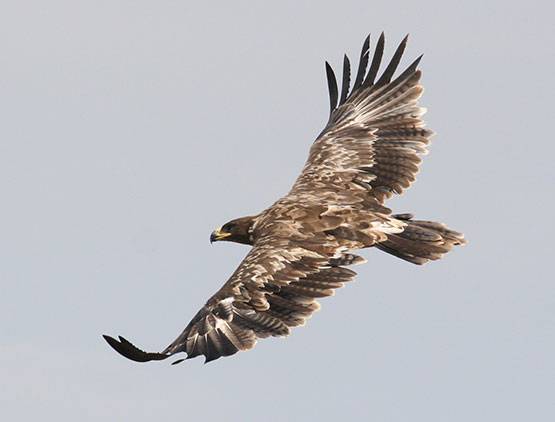Afghanistan – Armenia – Azerbaijan – Bahrain – Cyprus – Egypt – Georgia – Iran – Iraq – Israel – Jordan – Kazakhstan – Kuwait – Kyrgyzstan – Lebanon – Oman – Qatar – Saudi Arabia – South West Russia – Syria – Tajikistan – Türkiye – Turkmenistan – United Arab Emirates – Uzbekistan – Yemen

Capital: Moskow
Area: 603,225 km2
BirdLife International partner: None
Total number of bird species: 490
Globally threatened bird species: 18
Country endemics: 0
Important bird and biodiversity areas: 85 IBAs with a total area of 51,819 km2
Rare birds committee: There is currently no rare birds committee for South-West Russia.
Specialities: Caucasian Grouse, Caucasian Snowcock, Dalmatian Pelican, Steppe Eagle, Demoiselle Crane, Black-winged Pratincole, Great Black-headed Gull, Great Rosefinch
Ornithological interest:
Due to the wide variety of habitats in this region, one can find many bird species including those typical of deserts, steppes, forests, mountains and sea coasts. In South-West Russia, there are large expanses of uncultivated grasslands where traditional grazing remains the main form of land use. Therefore, many species that have become rare in, or disappeared from, the rest of Europe can still be found here in abundance. The high mountains of the Northern Caucasus are another highlight for birdwatchers as the mountains are home to some of the Caucasus endemics and large numbers of breeding birds of prey including Cinereous, Griffon and Egyptian Vultures and Lammergeiers. Other large raptors breeding in the region include Golden, Eastern Imperial and Lesser Spotted Eagles and Saker Falcons.
Numerous steppe lakes and the large river deltas of the Volga, Don, Kuban’ and Terek attract hundreds of thousands of breeding and migratory birds including long-distance migrants such as Red-breasted and Lesser White-fronted Geese. The Kumo-Manych Depression and Volga Delta are especially interesting as they are located on major migration routes and the large numbers of visiting and breeding birds include many rare and threatened species. The islands in the Kumo-Manych wetlands support breeding colonies of cormorants, pelicans, gulls, terns and waders, while the surrounding steppe is an important staging area for migrating Sociable Lapwings and Black-winged Pratincoles.
Little Bustard, Black-winged Pratincole, Demoiselle Crane and Steppe Eagle are common in the steppes of Kalmykia and Dagestan with Great Bustard, Stone Curlew and Lesser Kestrel also breeding in this area, albeit in lower densities.
Best times to visit:
A visit between March and June is best for spring migration and to encounter breeding birds. The period between August and October is best for autumn migration.
Essential reading:
Svensson L, Mullarney K, Zetterström D, Grant P (2010) Collins Bird Guide, HarperCollins, UK.
Trip report link:
Compilers:
Viktor Fedosov and Maxim Koshkin
